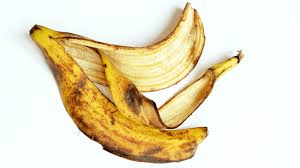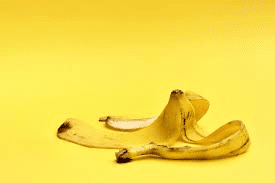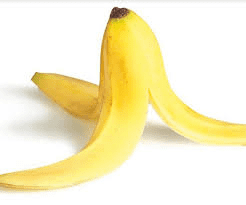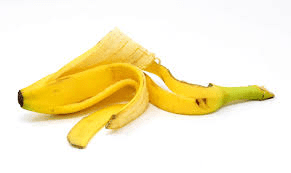The banana peel, often discarded after consuming the fruit, plays a surprisingly significant role beyond its initial protective function. Comprising primarily water, the peel also contains fibers, proteins, and carbohydrates. Its resilience provides a natural shield, safeguarding the fruit from environmental stresses and physical damage during growth and transport.
Botanically, the peel serves as a vital layer that helps regulate the ripening process of the banana fruit. Initially green due to the presence of chlorophyll, the peel gradually transitions to yellow as the fruit ripens. This change is influenced by the breakdown of chlorophyll and the synthesis of pigments such as carotenoids, which contribute to the fruit’s characteristic color and flavor development.
Beyond its botanical role, the banana peel offers various practical applications. It has been explored for its potential medicinal properties, containing compounds like antioxidants and polyphenols. These components may have anti-inflammatory and antimicrobial properties, making banana peels a subject of interest in natural medicine and skincare.
Furthermore, banana peels have found unconventional uses in environmental sustainability efforts. They can be composted to enrich soil nutrients or utilized as a natural fertilizer in agricultural practices. Some innovative approaches even propose using banana peels in water purification processes, harnessing their adsorption properties to remove pollutants from contaminated water sources.
Culturally, banana peels have inspired creativity in culinary practices. While not commonly consumed directly due to their bitter taste and tough texture, they have been used in traditional recipes in various cultures. For instance, in some cuisines, banana peels are cooked, pickled, or blended into chutneys and curries, offering a unique flavor profile and nutritional benefits.
In summary, the banana peel represents more than just a protective covering for its fruit. It embodies a blend of botanical significance, potential health benefits, environmental applications, and culinary innovation. As research continues to uncover its diverse uses and properties, the banana peel underscores the interconnectedness of agriculture, nutrition, and sustainable practices in global contexts.
The Economic Importance and Uses of Banana Peels

1. Composting: Banana peels are rich in nutrients like potassium and can be composted to create organic fertilizer for plants and gardens.
2. Animal Feed: In some places, dried and ground banana peels are used as supplementary feed for livestock, providing additional nutrition.
3. Biogas Production: Banana peels can be used in biogas production through anaerobic digestion, generating renewable energy.
4. Skincare: The inside of banana peels is used in natural skincare routines to moisturize skin and reduce inflammation.
5. Shoe Polish: The inside of banana peels can be rubbed on leather shoes to shine and polish them naturally.
6. Teeth Whitening: Rubbing the inside of a banana peel on teeth is believed to whiten them due to the presence of minerals like potassium.
7. Anti-aging Cream: Extracts from banana peels are used in cosmetic products for their antioxidant properties that help in reducing signs of aging.
8. Plant Fertilizer: Placing banana peels directly in the soil near plants can serve as a slow-release fertilizer, enriching the soil with nutrients.
9. Vinegar Production: Fermenting banana peels can produce vinegar, which is used in cooking and as a household cleaner.
10. Insect Repellent: Rubbing the inside of a banana peel on skin can repel insects like mosquitoes, thanks to compounds like citric acid.
11. Organic Pesticide: Boiling banana peels in water and using the strained liquid as a spray can deter pests from plants.
12. Cooking Uses: In some cuisines, banana peels are cooked and eaten after boiling or frying, providing dietary fiber and nutrients.
13. Water Purification: Banana peels can absorb heavy metals and other pollutants from water, contributing to water purification efforts.
14. Craft Projects: Dried banana peels can be used in art and craft projects, such as making paper or creating natural dyes.
15. Plant Propagation: Placing a piece of banana peel in the planting hole of cuttings or seedlings can provide nutrients and promote growth.
16. Shoe Deodorizer: Placing dried banana peels in shoes can help absorb moisture and reduce odor.
17. Household Cleaner: Rubbing the inside of a banana peel on surfaces can help clean and polish them due to its natural oils.
18. Eco-friendly Packaging: Banana peels can be dried and molded into biodegradable packaging materials, reducing plastic waste.
Read Also: Gray Leaf Spot (Stemphylium spp) – Symptoms and Damage Control
The Products and By-products That Can Be Derived From Banana Peels

1. Organic Fertilizer: Composted banana peels provide nutrients for plant growth.
2. Animal Feed: Dried and ground banana peels are used as supplementary feed for livestock.
3. Biogas: Banana peels can be used in biogas production through anaerobic digestion.
4. Skincare Products: Extracts from banana peels are used in skincare products for moisturizing and anti-aging benefits.
5. Shoe Polish: The inside of banana peels is used to shine and polish leather shoes.
6. Teeth Whitening: Rubbing banana peels on teeth is believed to whiten them.
7. Anti-aging Cream: Banana peel extracts are used in cosmetic products for their antioxidant properties.
8. Plant Fertilizer: Directly placing banana peels in soil enriches it with nutrients.
9. Vinegar: Fermenting banana peels produces vinegar used in cooking and cleaning.
10. Insect Repellent: Rubbing banana peels on skin repels insects like mosquitoes.
11. Organic Pesticide: Boiling banana peels in water creates a natural pesticide for plants.
12. Cooking Ingredient: In some cuisines, banana peels are cooked and eaten for their nutritional value.
13. Water Purification: Banana peels absorb pollutants from water, aiding in purification.
14. Craft Materials: Dried banana peels are used in art and craft projects.
15. Plant Propagation: Banana peels provide nutrients for plant cuttings and seedlings.
16. Shoe Deodorizer: Dried banana peels absorb moisture and reduce shoe odor.
17. Household Cleaner: Banana peels clean and polish surfaces naturally.
18. Packaging Material: Dried banana peels can be molded into biodegradable packaging.
Read Also: Recommended Number of Ruminant Animals per Housing Unit for Fattening
Frequently Asked Questions (FAQ’s) About Banana Peels

1. Can banana peels be composted? Yes, banana peels are rich in nutrients and can be composted to create organic fertilizer.
2. How are banana peels used in skincare? The inside of banana peels is used for moisturizing and reducing inflammation in skincare routines.
3. Are banana peels edible? While they can be cooked and eaten in some cuisines, they are generally not consumed due to their bitter taste and tough texture.
4. How do banana peels whiten teeth? Rubbing the inside of a banana peel on teeth is believed to whiten them due to minerals like potassium.
5. Can banana peels repel insects? Yes, rubbing banana peels on skin can repel insects like mosquitoes due to compounds like citric acid.
6. What nutrients are in banana peels? Banana peels contain potassium, dietary fiber, and other vitamins and minerals beneficial for plants and skin.
7. How can banana peels be used as a household cleaner? Rubbing the inside of a banana peel on surfaces can clean and polish them naturally.
8. Are banana peels biodegradable? Yes, banana peels are organic and biodegradable, making them environmentally friendly.
9. Can banana peels be used as packaging material? Yes, dried banana peels can be molded into biodegradable packaging materials, reducing plastic waste.
10. How do banana peels benefit plants? Banana peels provide nutrients like potassium and improve soil health when composted or directly applied to soil.
Read Also: 4 Steps to help an Orange Tree Produce Sweet Oranges

